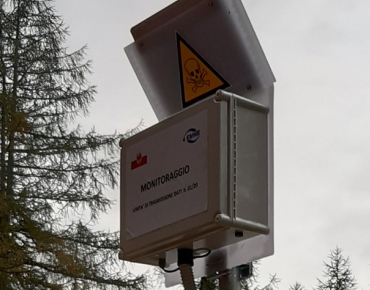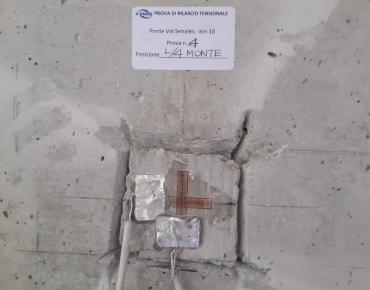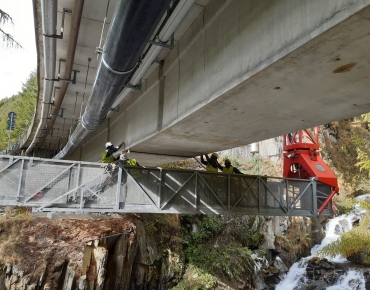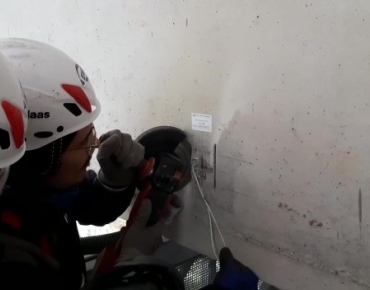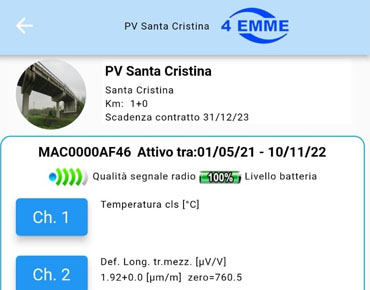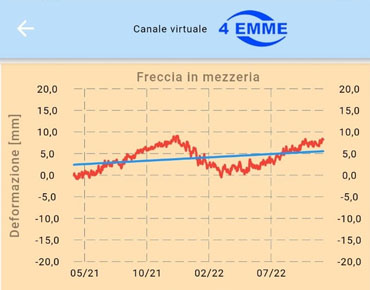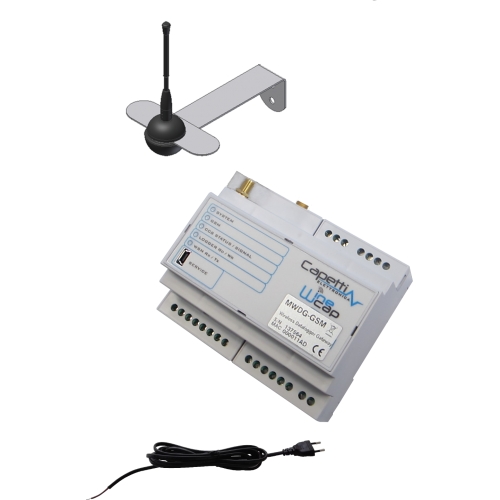Background
There were many objectives - measure existing compression on the bridge beams in question, check maximum beam deflection under load, and subsequently monitor the stress conditions continually.
The solution
Tensile testing was chosen to measure current residual prestress conditions, however not by taking the usual core sample of concrete, but rather by using a truncated pyramid sample appropriately set up by means of strain gauges connected to CAPETTI WineCap™ dataloggers. The graphs produced during the strain caused/applied when taking the sample and the µƐ value measured after taking the sample enabled a fairly precise evaluation of beam compression. Static strain gauge testing was then carried out, by measuring deformation with three sensors positioned at the centre and edges of the beam, and applying the weight of lorries, first one and then two (load test). Therefore the calculation did not focus on strain in terms of σ, but on deformation in terms of Ɛ (to understand the compression limit for the part under strain with a certain accuracy).
The result
In order to monitor the condition of the structure over time, values on the three strategic points are now captured regularly, so that the data can be viewed remotely with automatic alerts. The deterioration of a reinforced concrete bridge is never a sudden phenomenon (sagging cables, corrosion etc.). Techniques such as the one described above are long-term solutions that can avoid costly tomographic investigations.
As part of Venice’s urban regeneration RE.MO.VE project...
In the setting of the Spanish quarters of Naples, the new EDUQA educational…
In April 2022 the exhibition entitled Klimt - The Man, the Artist, his World...
Tunnels are an integral part of railway infrastructure...
The main aim of the Grand Paris Express project is to reinforce the Paris...
The distribution of domestic water in the network of service stations…
The work was to renovate and extend a historic building in an extremely…
TELT - Tunnel Euralpin Lyon Turin is the dual-national developer...
The requirement was to monitor a mast (radio base station) positioned on a slope...
Calculating heat consumption is crucial for managing corporate and…
Monferrato Piemontese is an area of Italy that features uplands and…
The Royal Palace of Caserta has been a UNESCO heritage site since 1997...
At the beginning of 2019, the Sant’Agata de’ Goti (BN) District Council ...
Cryogenic liquids, typically liquid nitrogen, are used for sensitive...
With almost 3000 hospital, school and university premises benefiting from its wireless...
Guaranteeing service continuity for installations in remote areas, where...
Milan’s La Scala Opera House is one of the most prestigious theatres...
A fundamental aspect in the maintenance of large works is checking…
Ipo Dam is a gravity dam with a concrete water reservoir situated at…
There were many objectives - measure existing compression on the bridge beams...
The WineCap™ data loggers for measuring temperature and humidity…
The Egyptian Museum in Turin is the oldest museum in the world...
This spectacular Doric temple was built in the 5th century BC ...
EDEN – Energy Data ENgagement – is a project that transpired from the idea...
Milan's M5 subway line winds along approximately 25 km of tunnels…
he construction of a Verona System by the company Petrucco required…
CAPETTI Elettronica has always been mindful of climate change...


